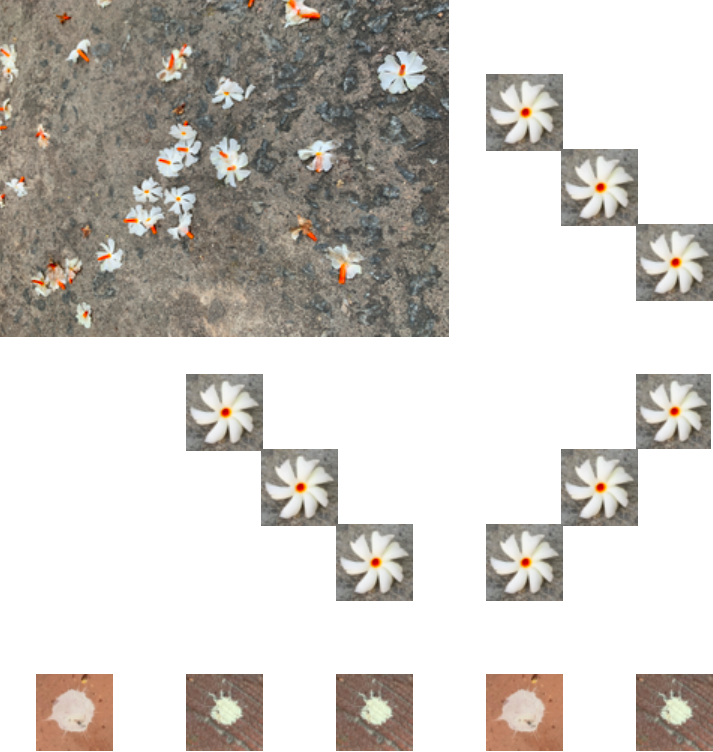Through this essay, I have demonstrated how a traditional and living cultural practice when used as subject matter can be used to create botanically oriented experiences through a range of modes, media, and techniques, and to connect to various perspectives and contemporary issues related to plants. The collaborations discussed showed possibilities for inclusive pedagogies by offering multiple modes of engagements. Images from a personal archive reveal the potential this floor has for translations through a range of different media within varying contexts.
I was able to use my own, and my students’, personal first-hand experiences with rangoli floor art as a foundation not only to learn about plants in the environment but also to increase our involvement and agency within public spaces, and to interact with wider communities. These engagements raised issues of freedom regarding the use of public spaces, involved experimentations with plant symbols and metaphors, and reflected personal and subjective experiences articulated using botanical material as media. Sites of learning beyond the classroom were accessed, social and critical issues were enquired into, and explorations with various media were encouraged, all the while engaging with the botanical realm.
Rooted in Indian traditional ritual art traditions, rangoli and kolam offer the opportunity to engage in multimodal creative expressions with plants across a range of contexts and contemporary issues. Multimodal experiences address the learning needs of a diverse student group and are inclusive in accommodating individuals’ preferences to learn through different senses and media. Thus, the pedagogical potential of rangoli and kolam for the study of plants lies in enabling multimodal pedagogical experiences with botanical themes that straddle the traditional and the contemporary – a potent combination for today’s learner.
